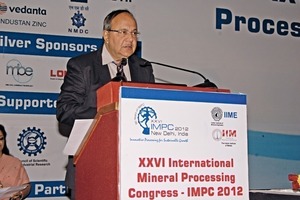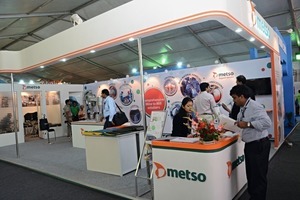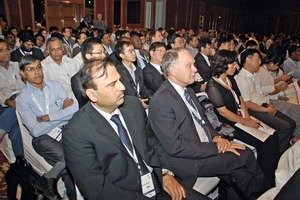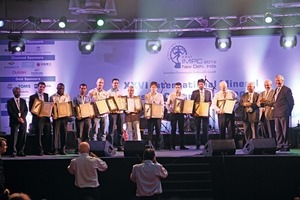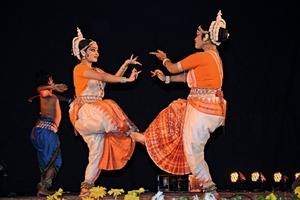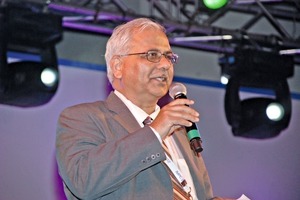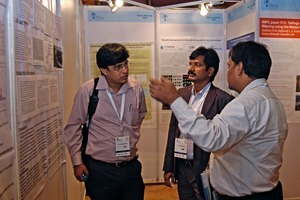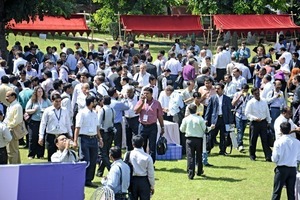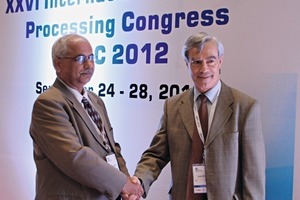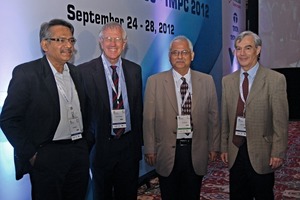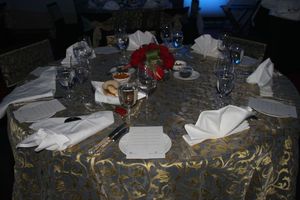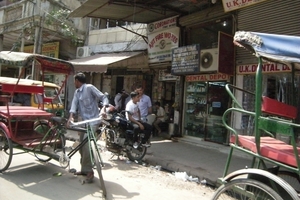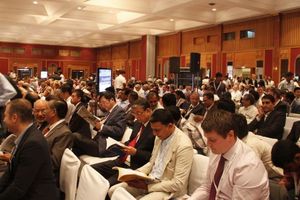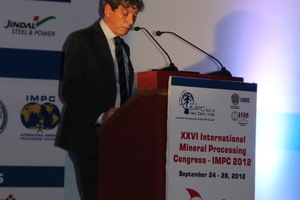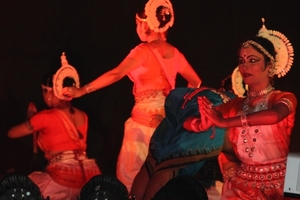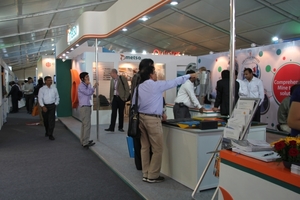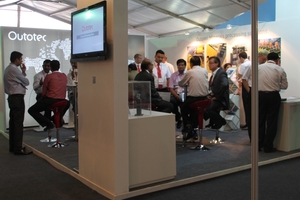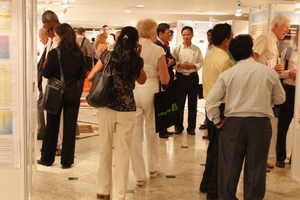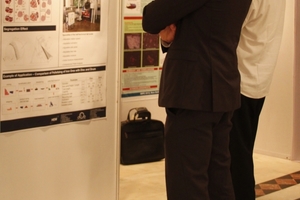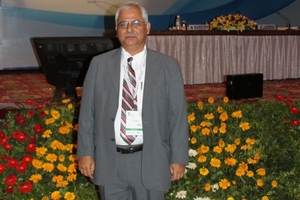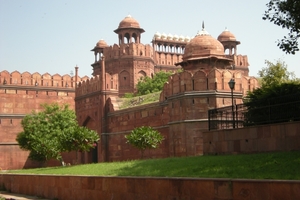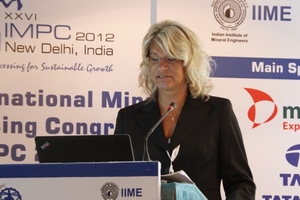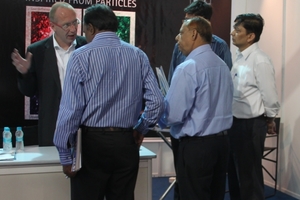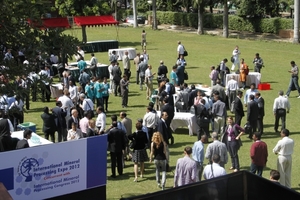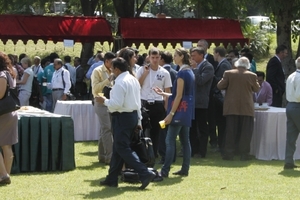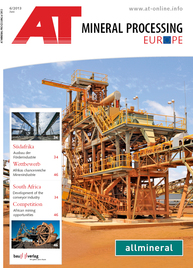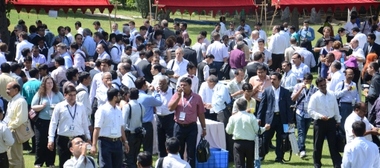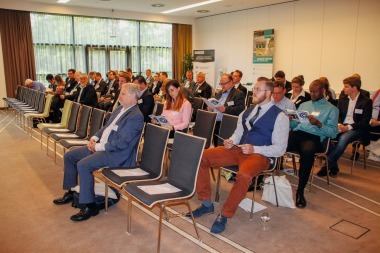Innovative Processing for Sustainable Growth
For the first time, India as a worldwide renowned emerging economic nation hosted the International Mineral Processing Congress (IMPC) – on September 23-28, 2012, in New Delhi. The prestigious big event in the field of mineral processing, which took place for the 26th time, was organized by the Indian Institute of Mineral Engineers (IIME) and the Indian Institute of Metals (IIM) together with and supported by other trade associations and the industry (Fig. 1).
The mining, mineral processing and metal industries are experiencing growth rates, in particular in China and India, as never before. So, the challenges for the industry are different now compared to the past. The shortage of land and water will drive the technology in the near future. Sticking to the environmental regulations will determine the choice of the technological options for projects to be developed. In particular, the industry in India faces new challenges to reduce its footprint. Land, energy and water are extremely limited resources in India. For this reason the organizers selected the topic theme “Innovative processing for sustainable growth” for the IMPC 2012. As regards the field of topics, competent lecturers gave an insight into the basic scientific developments in a comprehensive program. The congress also dealt with important technological developments in various industrial segments, for example iron and steel, coal, precious metals, rare earths, etc. More than 60 exhibitors (Fig. 2), amongst others, from plant construction companies, research institutes and consulting firms, presented new process technologies, plants, instruments and know-how at the technical exhibition, which was organized as a part of the congress.
Like the Congresses earlier, the IMPC 2012 was an ideal platform for the participants from all over the world, such as experts and managers from industry, universities, planning and engineering offices, plants engineering companies and operators, to discuss and exchange information as well as to establish new contacts and business relations and to deepen already existing ones. Furthermore, young scientists had the opportunity to establish contacts to the industry and also to present their own work and research projects pointing the way ahead.
In addition to knowledge and technology transfer, the cultural supporting programme was one of the highlights of the Congress (Fig. 3). Here the participants had the opportunity to experience and enjoy Indian music, dance and cuisine.
At the end of the almost one-week event, Dr Pradip, the President of the 26th IMPC, gave a summary as regards the Indian economy and his experience and impressions concerning the organization of this large international congress to Ulrike Mehl, the editor of AT Mineral Processing (Fig. 4). Dr Pradip is working as Vice President (Technology) at the Tata Research Development and Design Centre (TRDDC), which is the first software research centre in India established by TCS – Tata Consultancy Services – in 1981 at Pune. TRDDC undertakes research in Software Engineering, Process Engineering and Systems Research, including applications in the the iron and steel industry.
Dr Pradip: For a country with a population of more than 1billion, a functioning infrastructure is of fundamental importance – to maintain a certain standard of living for the people. The minerals and metals industries are very important in India to ensure this and also to maintain economic growth. Fortunately in India we are endowed with natural resources.
India has good deposits of iron ore, bauxite and coal. India is one of the Top 5 nations of the world that have these minerals. In addition we have huge limestone deposits for the cement industry. Iron, steel and cement are crucial factors for the basic infrastructure, for the development of housing, for a modern lifestyle overall. However, it is absolutely crucial that we get the right mix of technological options for a growing mining industry and public policy measures for the public good in India.
Dr Pradip: This is a sensitive issue. Any time you want to react to the demand for these mineral resources and open mines, there is a conflict with traditional human habitats. In mineral-rich areas where you can find the maximum deposits of the raw materials, we have many people living in their traditional human habitats, having not changed much ever since. Of course, we have to take some measures to help find alternate habitats for them. When a mining project comes up, there is always a question of displacing people. Land, energy and water are scarce resources in India. Therefore, we have titled the Congress: “Innovative Processing for Sustainable Growth”. We are challenged to develop environmentally friendly technologies ensuring the exploitation of raw materials in an energy and water efficient way, without destroying the landscapes and human habitats in the long-term.
Dr Pradip: In general innovation is the key for growth as well as for sustainability in the mining industry in India. For innovation you require trained bright minds who are inspired to tackle complex problems (Fig. 5).
India definitely has a history of R&D. In 1942 the Council of Science and Industrial Research (CSIR) was established – as the most significant institution for research. Today many laboratories are involved in research related to mining, mineral processing, energy and environment. Several national research laboratories are dedicated to research relateted to strategic materials, such as atomic minerals and rare earths. But all this is in the public sector with public funds invested. In India, the mix of public to private investment in R&D is 80 to 20 %. So, this situation must change, even though several things are already on the move and private industry is coming forward. The private industry as the end user should be really involved in the processes of research. Some of the leading companies – like the Tata Group – are already investing in this area in a big way. But, in fact, a lot more has to be done for us to be globally competitive.
Dr Pradip: This is a very acute problem in India because of the kind of perception being created – I would say – wrong perception of this important sector of the Indian economy in the minds of the young people. Mining, mineral processing, metals industry are not the preferred career choices for young people in India. They would prefer to go into banking, finance or information technology. Unfortunately some of the leading educational institutions in India, like the Indian Institute of Technology and the Indian Institute of Science, have moved to teaching and research in relatively novel technologies such as nanotechnology. So, as a consequence, we have now a rather acute shortage or lack of well trained Indian experts in the so called traditional academic fields to which the mining and minerals sector also belong.
So we must try and work hard to attract young bright minds to mining and mineral processing – for example by offering adequate training or education possibilities as well as present to them the challenging opportunities available to young professionals in this sector. One of the IMPC special symposiums was on Human Resource Development. For a country of more than 1 billion people, we should not have a shortage of human resources. But, that is the reality today – we do not have enough young and well trained people with right skills to tackle the kind of problems we have in mining and minerals sector.
Dr Pradip: Yes, a very significant part of our population is young and in an age where they can advance in their own career and contribute to the growth of our nation. But, that requires getting them to the right educational institutions. For example, some special chairs in Steel Technology have been created by the ministry of steel to attract professionals to teaching these subjects in the academic institutions. However, for training young people, you also need excellent teachers, who are not only knowledgeable but also are good communicators and who can inspire young minds to take this kind of career. That is also a problem right now.
Dr Pradip: Now the Indian industry is very much participating in globalization processes. Let’s have a look at the Tata Group, with 98 companies employing more than 350 000 people. The individual companies have subsidiaries in 85 countries all over the world. Tata Steel, for example, has now Tata Steel Europe – since 2010. In the minerals and metals industry, there is a lot of consolidation going on. Fortunately, India has rich natural resources and Indian companies are looking at acquisitions for offering even better performances.
International collaboration has always been there in India and Indian researchers have played an important role globally. Because of historical reasons, several Indians have been working abroad and there have been international collaborative programs. To be globally competitive, Indian industry has to work with international institutions and international research groups. Fortunately, companies are also conscious of this fact and are participating in international collaborative programs. To survive in a global economy, you have to innovate. You have to have the supply not only in terms of raw materials, but also in terms of technology, talent and human resources. I think in the next decade, there will be a lot of changes, both in the policy matters and in international cooperation.
Dr Pradip: Being an Indian, I see huge opportunities in India. Our government is empowered to address the needs of our young population. There is a tremendous pressure to live up to the expectations to the people. So I believe that there will be tremendous growth in India.Sustained economic growth is the only way forward for India.
Dr Pradip: I’ve been charged with the preparations since 2008. Over this long period of time, it has been a pleasure and privilege in being able to interact with leading mineral engineers and professionals all over the world. As being the president of IMPC, I must have talked to literally hundreds of people on a personal level about IMPC. It was a question of inviting all these experts to create a platform for intensive exchange of information in the field of mineral processing - scientific knowledge and development as well as applications. I’m really grateful to all the people and all the participants, who have come to New Delhi – many of them for the first time, travelling thousands of miles – to attend this Congress in New Delhi. I am fortunate to have had the help and support of a team of dedicated professionals – the members of the various organizing committees, who have worked hard to make this congress a success.
Dr Pradip: I think a few things have been achieved with this Congress. First, we have a large population of young mineral engineers in india who are attending this Congress and getting exposed to international level professionals from all over the world in such large numbers, perhaps for the first time. I think that, listening to all these professional leaders from all over the world should inspire at least a fraction of them to take up mineral engineering as a career. Even if 10 % of them think about mineral engineering as a career of their choice, it would be a great contribution to mineral engineering in India.
Secondly, of course, is the sharing of information and the exchange of ideas and technological innovations (Fig. 6) amongst the delegates of IMPC 2012. By the fact that more than a thousand delegates from all over the world are there at one place, there are a number of possibilities getting created. There are delegates from industry, academic institutions and also students and teachers participating in the Congress. India is not hosting many international conferences of this kind. So this IMPC has certainly provided international exposure and excellent possibilities of creating networks and so on amongst us (Fig. 7).
Furthermore, IMPC 2012 also focussed on technological developments in some of the industrial segments specific to India. Besides the basic scientific developments in the fields of comminution, gravity separation, flotation solid-liquid separation, pelletization, agglomeration and sintering, extraction of metals and hydrometallurgy etc., the technological advancments related to specific industrial segments such as minerals for the iron and steel or aluminium industry, platinum group or industrial minerals etc, we have also included special topics such as sustainability issues related to mining and mineral processing, the development of human resources for the minerals industry or the role of information technology in mineral processing. Due to the deliberations and contributions of the experts from India and abroad, I think that this congress has not only been a great success but also a great benefit to all delegates and that we could learn a lot. We all are looking forward to the next IMPC 2014 in Chile (Fig. 8 and Fig. 9).

